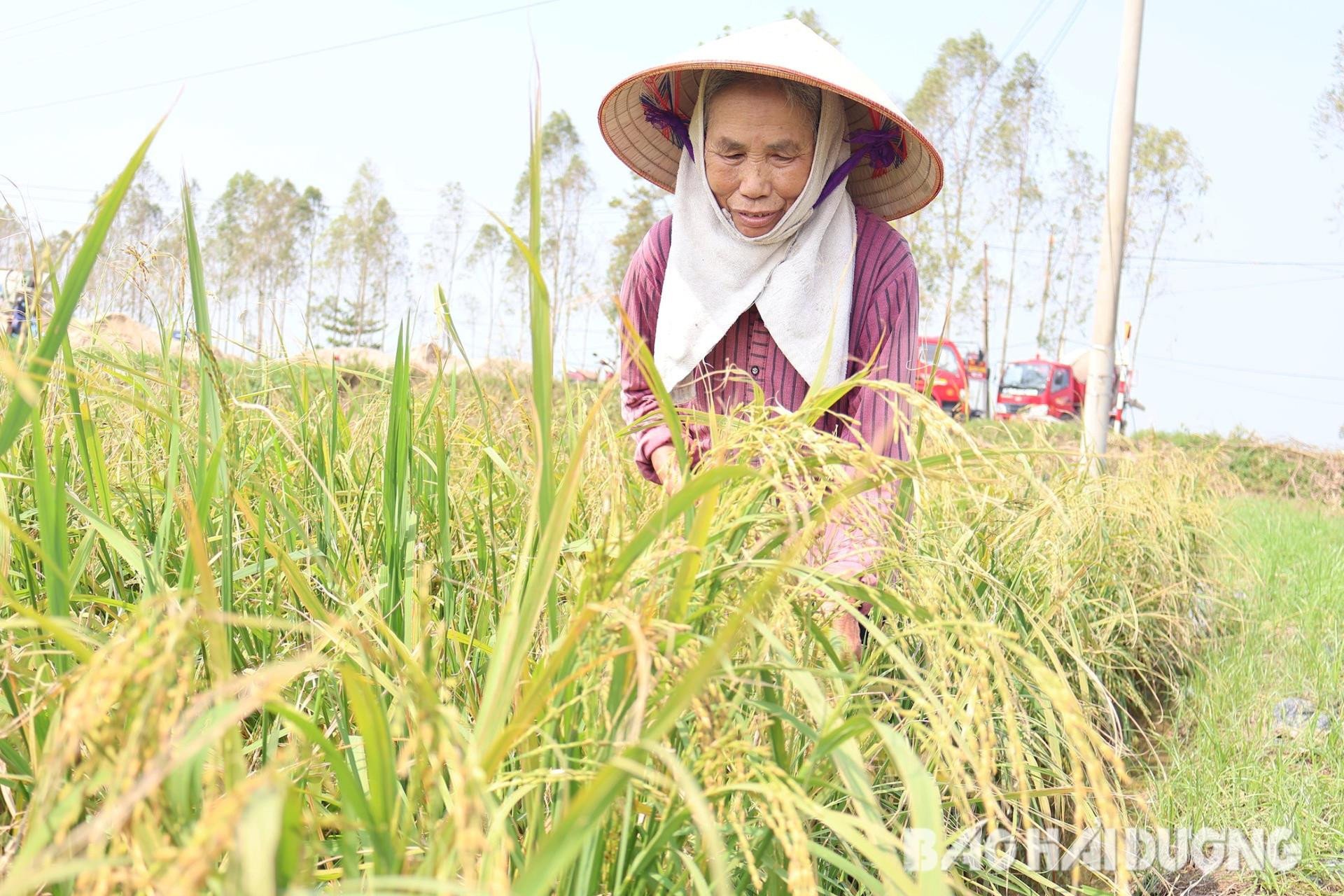
Clean up after the storm
In the fields of Bui Thuong village, Le Loi commune (Gia Loc), Ms. Dinh Thi Hoat and many other farmers took advantage of the sunny weather to clean the fields and overcome the consequences of the storm. Ms. Hoat shared: "My family planted 3 sao of early rice, the storm and wind made all the rice fall, leaving only a few young rice flowers, but we still had to harvest them in time to prepare the land for early winter crops. The fields have never been flooded as badly as this storm, 3 sao of cabbage planted before the storm was flooded and then exposed to the sun after the storm, the plants withered and could not recover".
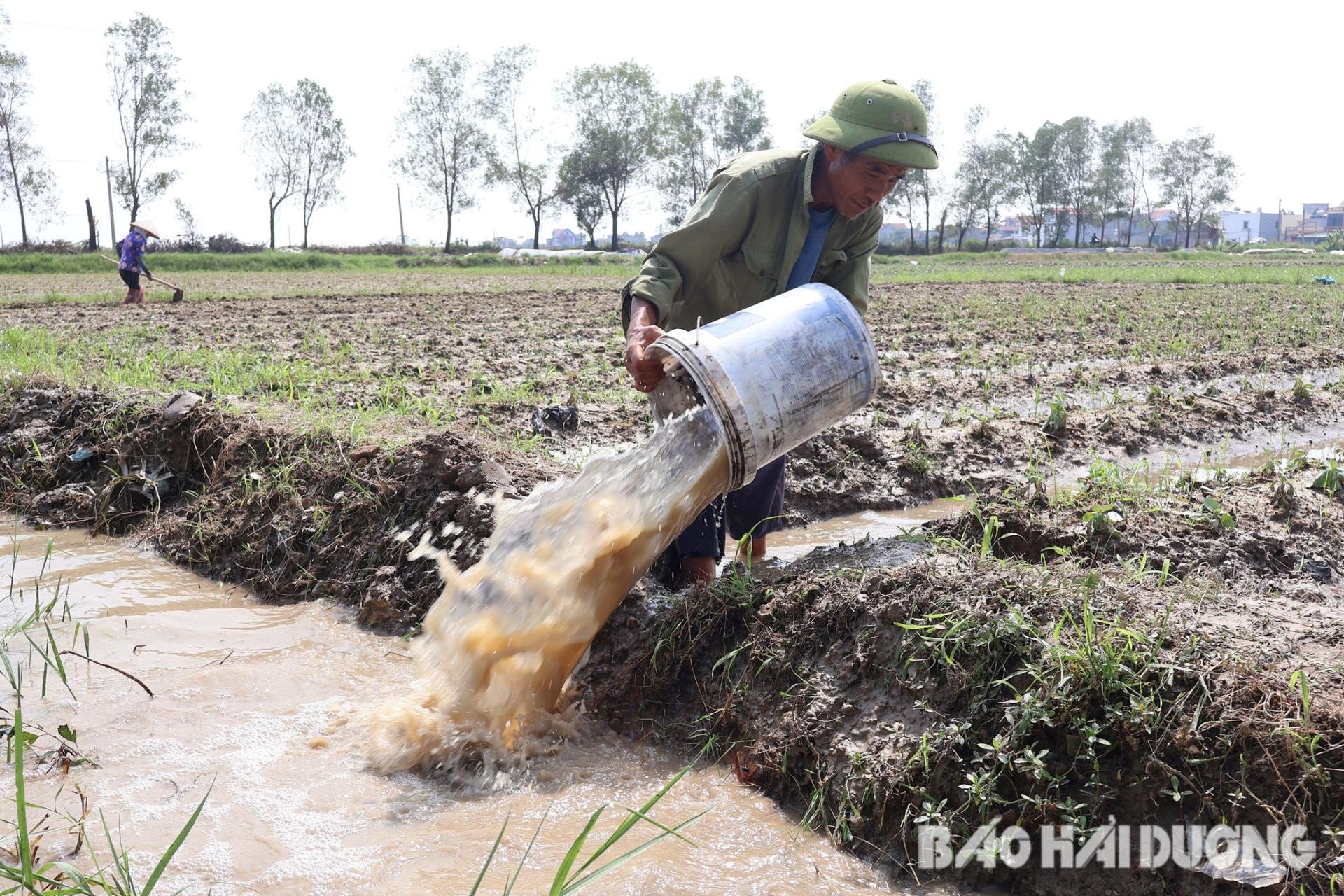
Not far away, Mr. Pham Van Sau had to drain buckets of water from his fields into the canals to save his vegetables. His family planted 8 sao of kohlrabi and 6 sao of cabbage were flooded and lost. Only 2 sao of cabbage were left, which were less flooded so they could be repaired. According to Mr. Sau, the cost of replanting is about 2.5 million VND/sao, but replanting will take more effort and cost more.
While many farmers' cabbage and kohlrabi fields were crushed and flooded, the 2 acres of cabbage owned by Ms. Vu Thi Nhai's family in Xuan Trinh village, Gia Luong commune (Gia Loc) were less affected. She said that her family's cabbage field was planted in a highland area, and the plants were planted early, so luckily they were less crushed. Taking advantage of the sunny weather, she cleaned the fields, picking up crushed and old leaves to prevent pests from developing and harming the plants.
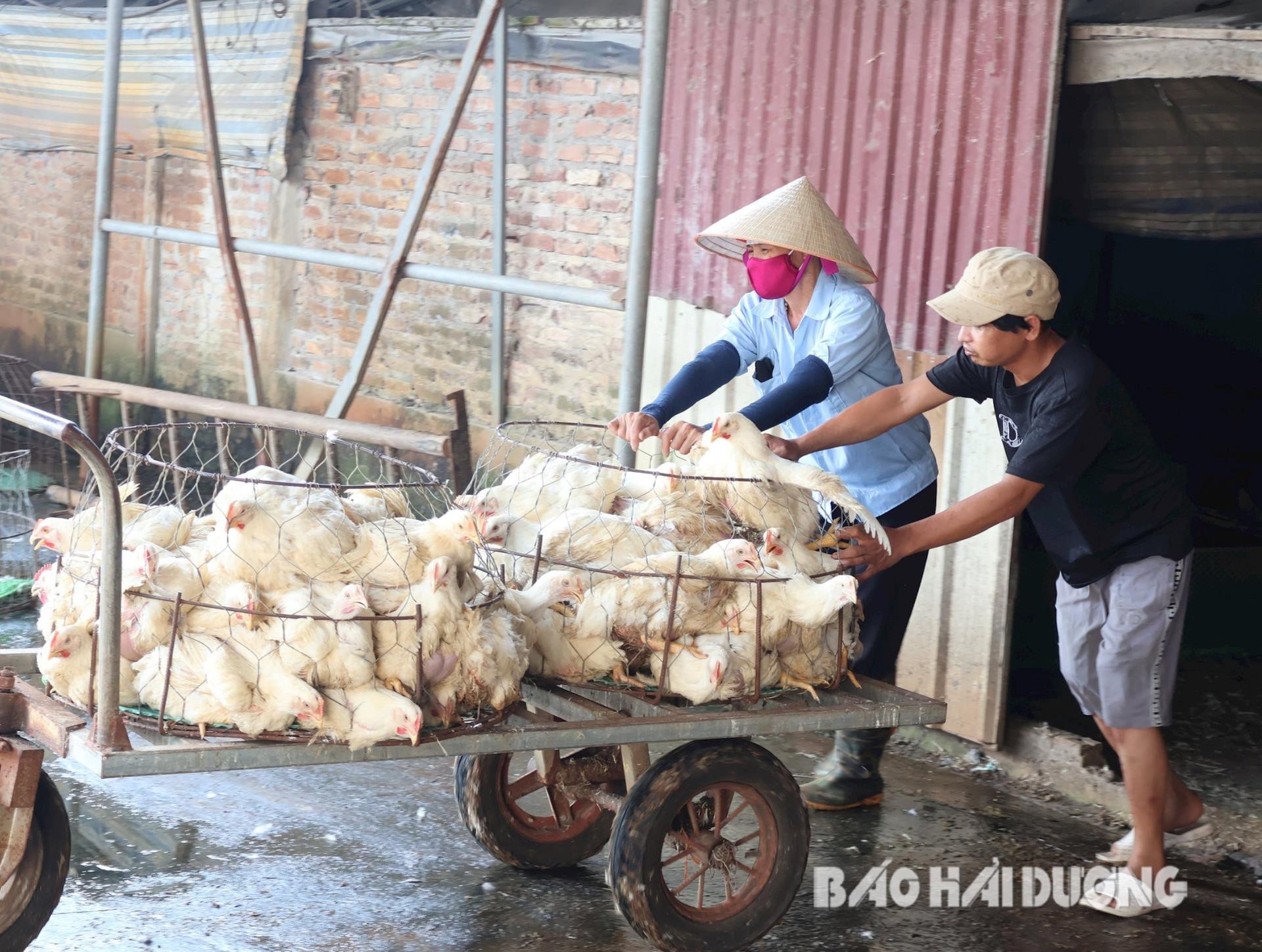
Sunny weather is also a favorable condition for farmers to clean their livestock barns. Storm No. 3 caused heavy damage to Mr. Vu Van Linh's broiler farm in Cam Dong village, Tuan Viet commune (Kim Thanh) with about 10,000 poultry dead. Mr. Linh said: "After the storm, I asked relatives and friends to clean up the rubble, re-roof the chicken coop that had been blown off, collect all the dead poultry, and dispose of waste according to the correct procedures to avoid pollution. When the weather is sunny, I continue to spray disinfectants on the livestock barns in time for the new crop."
According to the provincial Department of Animal Husbandry and Veterinary Medicine, although the damage is not great, the risk of disease after the storm and flood will be very high. Cleaning the barns is extremely important. This is also the time when dangerous diseases are likely to break out in livestock. In flooded areas, immediately after the water recedes, the authorities and specialized agencies must organize a general cleaning, collect feces and garbage for treatment, disinfect and sterilize flooded livestock areas to disinfect the environment and destroy pathogens.
Urgent
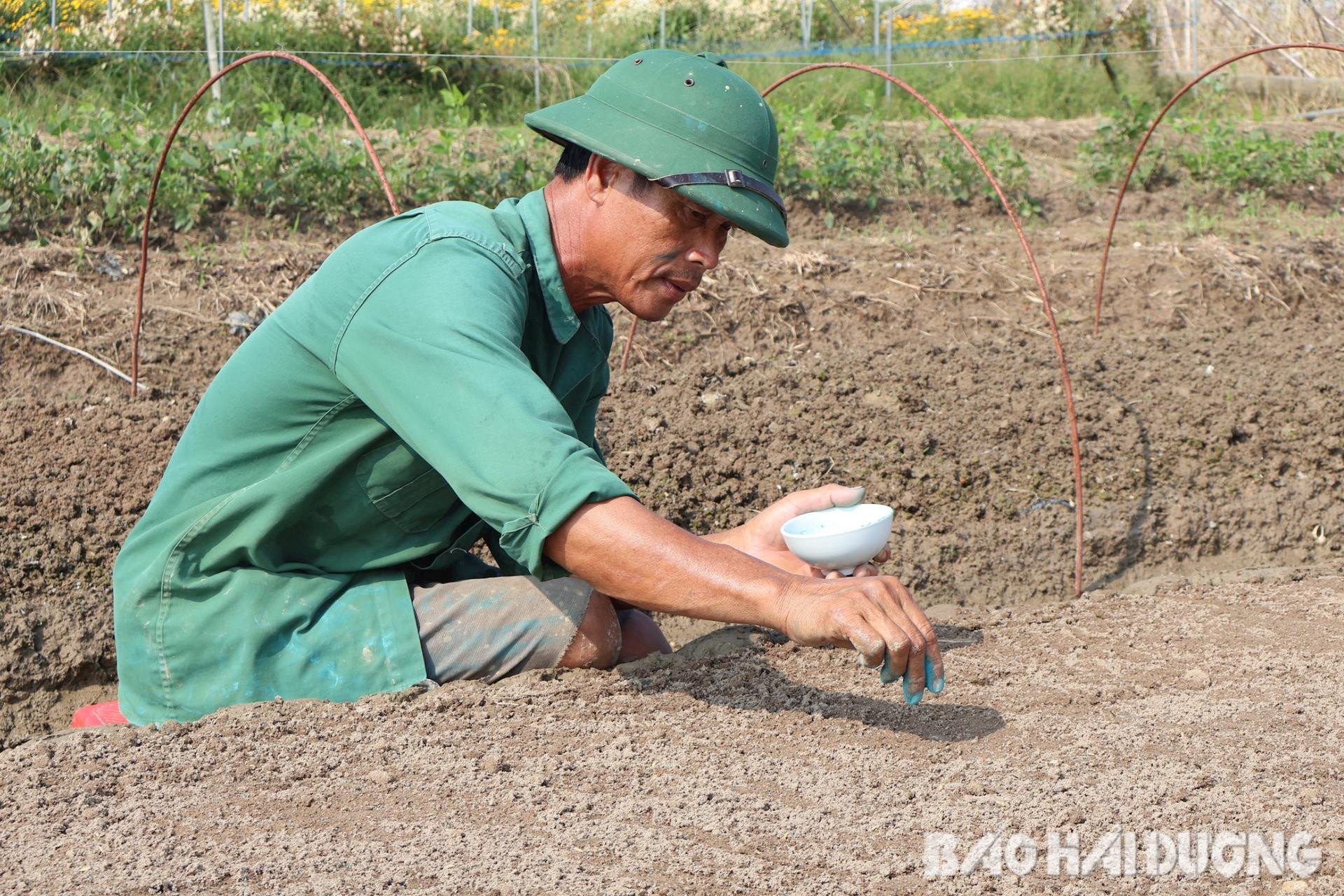
From early morning, taking advantage of the sunny weather, Mr. Nguyen Van Hung and his wife in O Me village, Hung Dao commune (Tu Ky) re-cultivated the land to re-sow vegetable seeds damaged after the storm. Quickly sowing vegetable seeds into the beds, Mr. Hung shared: "If we sow vegetable seeds at this time, it will take about a month to have seedlings to plant. In previous winter crops, my family had to plant 2 batches of winter vegetables by sowing early, but this year there is only 1 batch. Hopefully from now until Tet, the weather will be favorable so that we farmers can recover some capital."
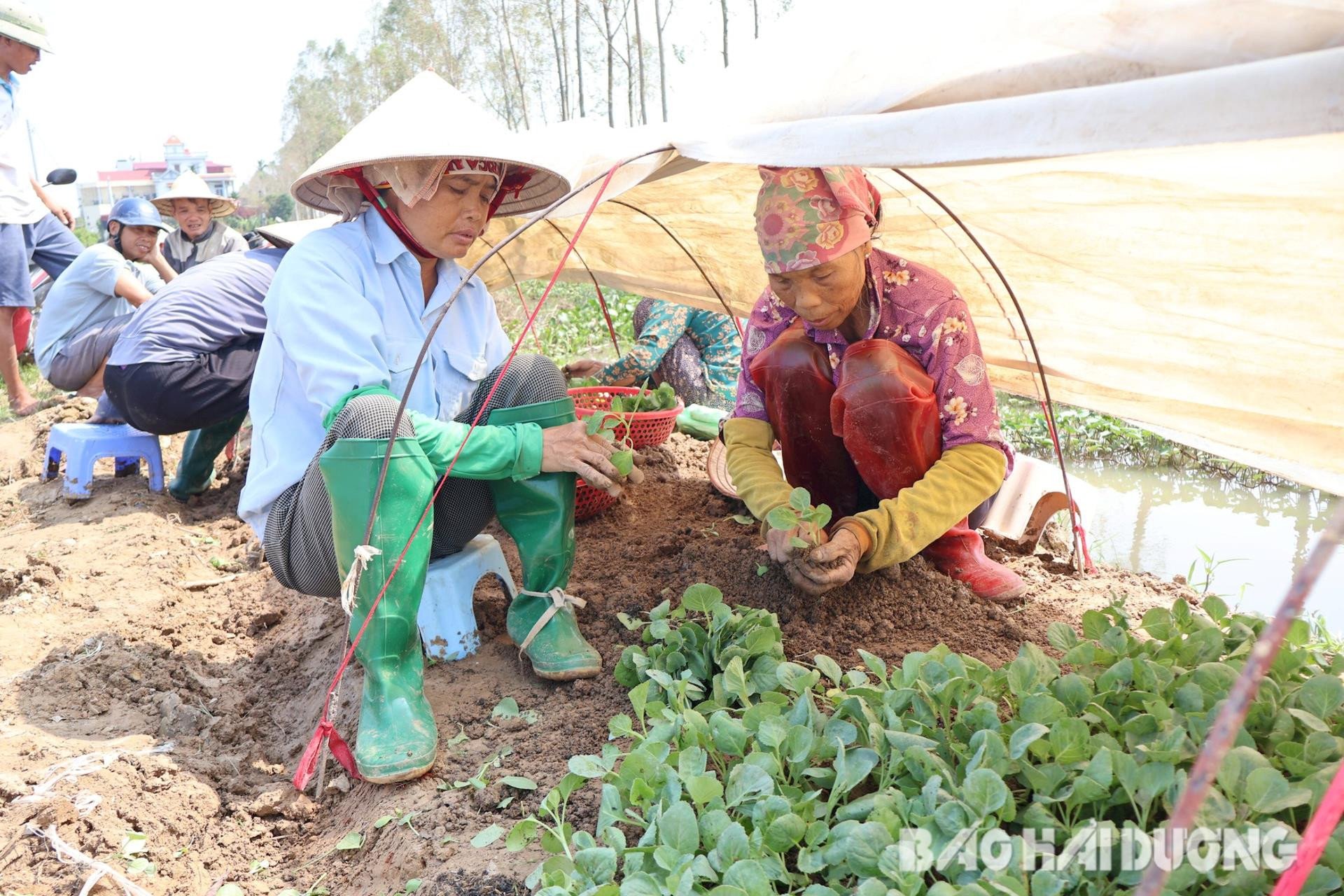
Mr. Tran Van Thoang in Bui Thuong village, Le Loi commune (Gia Loc) had more than 1 hectare of early winter vegetables flooded, with estimated damage of over 20 million VND. Right after the storm, waiting for the water to recede, Mr. Thoang hired workers and bought seedlings to prepare for planting a new crop. "Most vegetable seed growers suffered damage, so the price of seedlings increased. I had to ask people to buy seedlings from many gardeners to replant in time for the season. Each sao of replanting costs about 3 million VND, an increase of about 500,000 VND/sao compared to the previous crop."
Heavy rains caused the water level in the fields to rise, causing the entire 7,000 m2 fish pond of Mr. Quang Phuc in Xuan Neo village, Hung Dao commune (Tu Ky) to overflow, causing an estimated loss of about 200 million VND. Mr. Phuc said: "The water rose quickly, the fish pond is in a low-lying area, so there is no way to keep the fish in the pond. All the tilapia, grass carp, and common carp released since the beginning of the year are considered a total loss. I will wait a few days for the water to recede, then I will borrow someone to repair the pond bank and then release the fish again." According to Mr. Phuc, in Xuan Neo village alone, many areas of fish ponds have overflowed and been completely lost. To overcome this, households have bought bamboo poles, nets, and many other materials to reinforce and repair the pond bank as soon as the water recedes.
Storm No. 3 has caused severe damage to the agricultural sector of Hai Duong province. Thousands of hectares of rice and vegetables were damaged, many areas of greenhouses and net houses were affected, many livestock and poultry died. To proactively overcome the consequences and minimize the damage caused by storms and floods, the agricultural sector requested the People's Committees of districts and cities and requested relevant units to focus on directing and guiding farmers to restore production after storms and floods. Instruct farmers to set up ties for flooded rice areas, keep the water level at 3-5cm on the field surface so that the rice can emerge and grow well. Proactively check the fields and prevent pests and diseases after the storm to have timely and effective control measures. For vegetable areas that cannot recover, it is necessary to destroy, clean the fields, and quickly prepare the soil in time to plant early winter crops.
For flooded aquaculture areas, after the water recedes, the pond banks need to be repaired firmly, the pond banks must be 0.5m higher than the highest annual water level. Clear the flow of rivers and ditches around the pond to facilitate drainage. Clean the pond, add vitamins, minerals or probiotics to the feed to increase the resistance of farmed aquatic products...
Although severely affected by natural disasters, with the drastic direction of local authorities and the initiative of the people, it is hoped that agricultural production in the province will soon recover.
Storm No. 3 caused heavy damage to Hai Duong 's agricultural sector. According to preliminary statistics up to September 13, more than 7,700 hectares of rice were flooded and damaged; more than 3,200 hectares of vegetables were flooded, broken, and crushed. Regarding the area of fruit trees, about 4,370 hectares were flooded, broken in the middle, and could not be repaired, and about 2,250 hectares of forest were damaged. 65 hectares of greenhouses and net houses were affected. In addition, more than 70 cattle and 388,600 poultry died; about 560 hectares of aquaculture were flooded and more than 430 fish cages were flooded, broken, and drifted.
Source: https://baohaiduong.vn/hai-duong-tap-trung-khoi-phuc-san-xuat-nong-nghiep-sau-bao-393105.html


![[Photo] Readers line up to visit the photo exhibition and receive a special publication commemorating the 135th birthday of President Ho Chi Minh at Nhan Dan Newspaper](https://vphoto.vietnam.vn/thumb/1200x675/vietnam/resource/IMAGE/2025/5/17/85b3197fc6bd43e6a9ee4db15101005b)


![[Photo] Prime Minister Pham Minh Chinh chairs meeting on science and technology development](https://vphoto.vietnam.vn/thumb/1200x675/vietnam/resource/IMAGE/2025/5/17/ae80dd74c384439789b12013c738a045)
![[Photo] More than 17,000 candidates participate in the 2025 SPT Competency Assessment Test of Hanoi National University of Education](https://vphoto.vietnam.vn/thumb/1200x675/vietnam/resource/IMAGE/2025/5/17/e538d9a1636c407cbb211b314e6303fd)








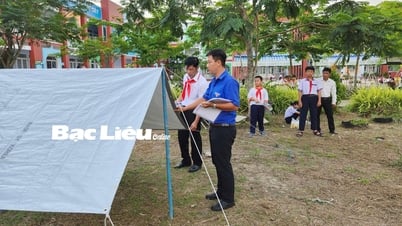





![[Infographic] Numbers about the 2025 High School Graduation Exam in Dong Thap Province](https://vphoto.vietnam.vn/thumb/402x226/vietnam/resource/IMAGE/2025/5/17/c6e481df97c94ff28d740cc2f26ebbdc)
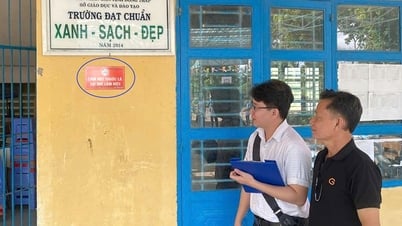



![[Photo] Nearly 3,000 students moved by stories about soldiers](https://vphoto.vietnam.vn/thumb/1200x675/vietnam/resource/IMAGE/2025/5/17/21da57c8241e42438b423eaa37215e0e)






































































Comment (0)